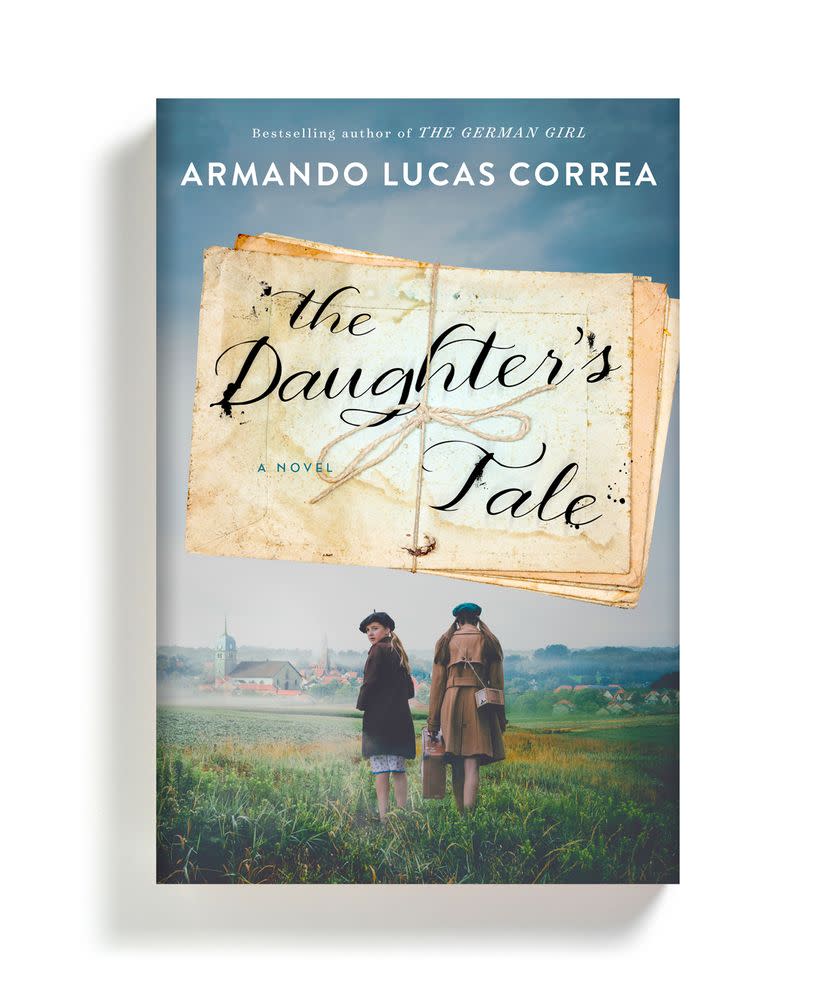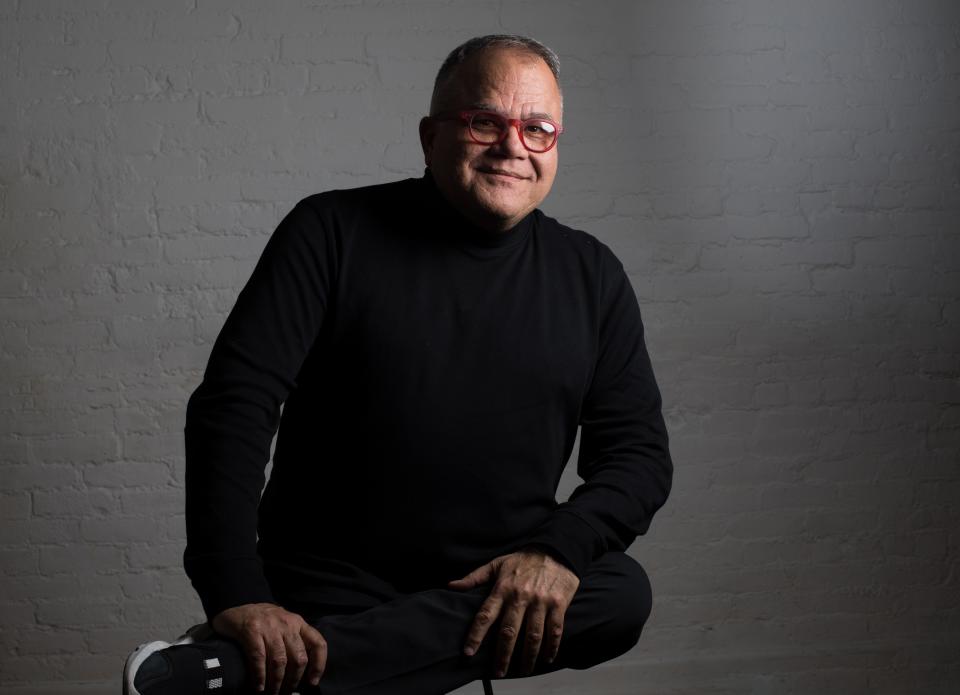People en Español’ s Armando Correa Shares the Inspiration for His Holocaust Trilogy’s Second Book, The Daughter’s Tale
People en Español editor in chief Armando Correa has a side hustle that might surprise you. When he is not overseeing the magazine’s iconic 50 Most Beautiful People “Bellos” double issue, he is exploring little known yet epic crimes of history surrounding Nazi Germany and World War II through the personal narratives of amazing characters across decades.
His latest novel, The Daughter’s Tale, drops in English May 7. The story, which connects 1939 Berlin and 2015 New York City, is based on true events and shows how the Holocaust still affects families and lives to this day. It is the second in a trilogy that began with the exploration of an oft-overlooked episode involving the Saint Louis, a ship carrying more than 900 Jewish European refugees that was turned away by Cuban officials. In Correa’s first book, The German Girl, he focused on the lives of the 28 Jews allowed to stay in Cuba (where Correa was born). That novel also has a split structure that links to modern-day descendants still dealing with events from more than 70 years ago.
In The Daughter’s Tale, Correa revisits another lesser known Nazi atrocity in Occupied France, the Oradour sur Glane massacre. In the story, Amanda Stenberg is the German Jew fleeing the Nazis with her children after her husband his taken, while 80-year-old Elise Duval, living in present day New York, is forced to reconcile with her past after suddenly receiving letters in German written by her mother. The final installment of the trilogy is set to be titled The Night Traveler and focus on German eugenics programs.

Correa, who’s spent the last 12 years with People en Español, began his journalism career in Havana in 1988. Openly gay, he knows something about persecution, growing up at a time when Cuba had anti-gay laws and homosexuals were put in their own concentration camps. He and his partner, together 30-plus years, moved to the States in 1991. In his first (nonfiction) book,
In Search of Emma: Two Fathers, One Daughter and the Dream of a Family
(Rayo, Harper Collins, 2009), the father of three’s journey to create a new life and family in the U.S. is detailed.
The recipient of outstanding achievement awards from the National Association of Hispanic Publications and the Society of Professional Journalism gave us a glimpse into his personal inspiration for the novels and his writing process.
CHICA: How did these stories, the idea for the trilogy, come to you? What drew you personally to the story?
Armando Correa: I grew up in Cuba, and I remember when I was 10 years old, my grandmother would tell us at dinner that Cuba would pay very dearly for what it had done to the Jewish refugees. As I grew up, I understood she was referring to the Saint Louis tragedy, something which is never spoken of in Cuba. My grandmother, the daughter of Spanish immigrants, was pregnant with my mother when the Saint Louis arrived in the port of Havana on May 27, 1939. Seeing how the bulk of the refugees aboard were forced to return to Europe and faced their deaths in Nazi concentration camps impacted her deeply.
What makes these books different from other stories of lives destroyed by the Nazis and other holocaust survivors? Cuba certainly stands out.
In the three novels I wanted to tackle historical events that have long been forgotten. All were stories involving Nazis that implicated countries like Cuba, the U.S., Canada and France, all which in a way were also responsible for the fate of so many.
What was your research process like? Was it similar for the first two books?
Both novels required years of investigation. For the first, I refused to speak to MS Saint Louis survivors until after I finished writing the book and traveled to Berlin, Auschwitz and Havana. For The Daughter’s Tale, I did the opposite: First I went to Oradour sur Glane, and then I plunged fully into the book. They were two completely different writing processes. In The German Girl, my first novel, the story takes place in New York, Berlin and Havana. Paris is mentioned only in passing. That novel really was about what happened to the 28 passengers of the MS Saint Louis who were allowed to disembark in Havana. But what became of the other 900 Jewish refugees who were forced to return to Europe? In this second novel, I wanted to look explore the fate of some of the passengers who ended up in France.
What relevance would you say does The Daughter’s Tale have to current events?
This fear that we have of others, of those who are different, is the essence of The Daughter’s Tale, a story of love and hope against all odds. A mother must make a drastic decision and resort to abandonment in order to save her daughter in a world that rejects the other, those it considers “out of the box,” those who seek to impose perfection, balance.
We don’t learn from history; we tend to fall into oblivion. The day we accept that we are all different — and respect those differences instead of trying to assign them names and worth — is the day that we can finally banish the poisonous idea of the “other.”

 Yahoo Estilo
Yahoo Estilo 

